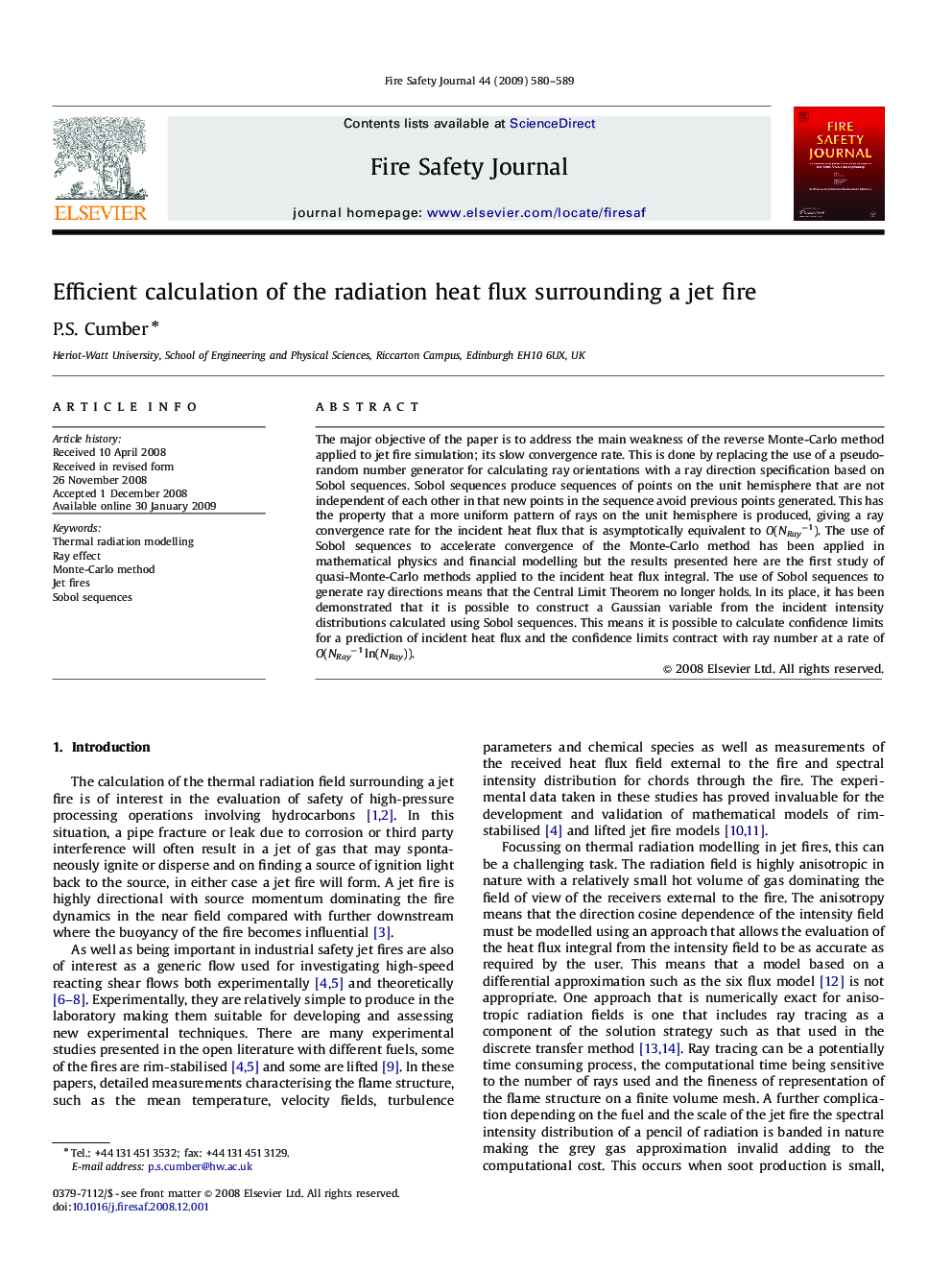| Article ID | Journal | Published Year | Pages | File Type |
|---|---|---|---|---|
| 270439 | Fire Safety Journal | 2009 | 10 Pages |
The major objective of the paper is to address the main weakness of the reverse Monte-Carlo method applied to jet fire simulation; its slow convergence rate. This is done by replacing the use of a pseudo-random number generator for calculating ray orientations with a ray direction specification based on Sobol sequences. Sobol sequences produce sequences of points on the unit hemisphere that are not independent of each other in that new points in the sequence avoid previous points generated. This has the property that a more uniform pattern of rays on the unit hemisphere is produced, giving a ray convergence rate for the incident heat flux that is asymptotically equivalent to O(NRay−1). The use of Sobol sequences to accelerate convergence of the Monte-Carlo method has been applied in mathematical physics and financial modelling but the results presented here are the first study of quasi-Monte-Carlo methods applied to the incident heat flux integral. The use of Sobol sequences to generate ray directions means that the Central Limit Theorem no longer holds. In its place, it has been demonstrated that it is possible to construct a Gaussian variable from the incident intensity distributions calculated using Sobol sequences. This means it is possible to calculate confidence limits for a prediction of incident heat flux and the confidence limits contract with ray number at a rate of O(NRay−1 ln(NRay)).
